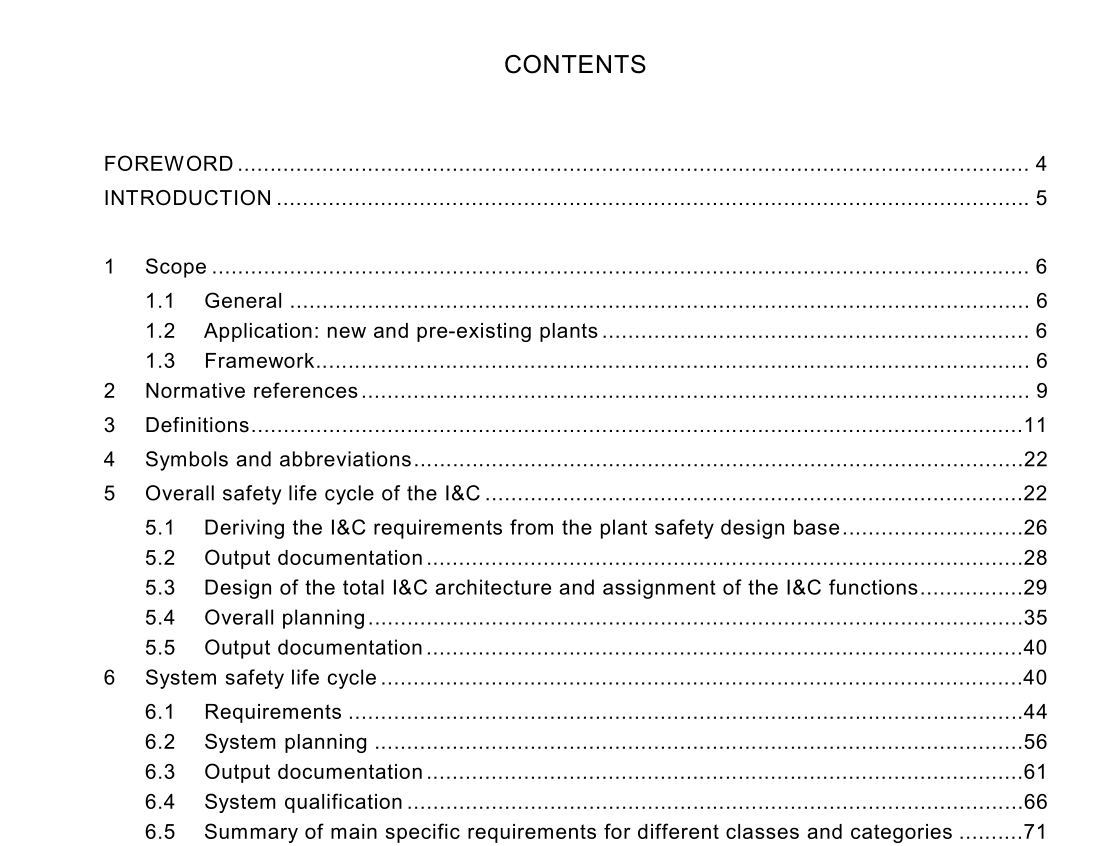BS IEC 61513 pdf download

BS IEC 61513 pdf download.Nuclear power plants – Instrumentation and control for systems important to safety – General requirements for systems
1 Scope
1.1 General I&C systems important to safety may be implemented using conventional hard-wired equip- ment, computer-based (CB) equipment or by using a combination of both types of equipment. This International Standard provides requirements and recommendations (see note) for the total I&C system architecture which may contain either or both technologies. NOTE In the following, the term requirements is used as a comprehensive term for both requirements and recommendations. The distinction appears at the level of the specific provisions. where requirements are expressed by “shall” and recommendations by “should”. This standard highlights the need for complete and precise requirements, derived from the plant safety goals, as a pre-requisite for generating the comprehensive requirements for the total I&C system architecture, and hence for the individual I&C systems important to safety. This standard introduces the concept of a safety life cycle for the total I&C system architecture, and a safety life cycle for the individual systems. The life cycles illustrated in, and followed by, this standard are not the only ones possible; other life cycles may be followed, provided that the objectives stated in this standard are satisfied. 1.2 Application: new and pre-existing plants This standard applies to the I&C of new nuclear power plants as well as to I&C up-grading or back-fitting of existing plants. For existing plants, only a subset of requirements is applicable and this subset is identified at the beginning of any project.
3 Definitions
For the purposes of this International Standard, the following definitions apply. 3.1 application function function of an I&C system that performs a task related to the process being controlled rather than to the functioning of the system itself [2.1 of IEC 60880, modified] NOTE 1 See also “I&C function”, “I&C system”, “application software”. NOTE 2 An application function is normally a subfunction of an I&C function. 3.2 application software part of the software of an I&C system that implements the application functions See figure 2. NOTE 1 See also “application function”, “application software library”, “system software”. NOTE 2 Application software contrasts with system software. 3.3 application software library collection of software modules implementing typical application functions See figure 2. NOTE When using pre-existing equipment, such a library is considered to be part of the system software and qualified as such. 3.4 category of an I&C function one of three possible safety assignments (A, B, C) of I&C functions resulting from considerations of the safety relevance of the function to be performed. An unclassified assignment may be made if the function is not significant to safety NOTE 1 See also “class of an I&C system”, “I&C function”. NOTE 2 IEC 61 226 defines categories of I&C FSE. To each category corresponds a set of requirements applicable on both the I&C function (concerning its specification, design, implementation, verification and validation) and the whole chain of items which are necessary to implement the function (concerning the properties and the related qualification) regardless how these items are distributed in a number of interconnected I&C systems. For more clarity, this standard defines categories of I&C functions and classes of I&C systems and establishes a relation between the category of the function and the minimal required class for the associated systems and equipment. 3.7 common cause failure (CCF) failure, which is the result of one or more events, causing coincident failures of two or more separate channels in a multiple channel system or in multiple systems, leading to system(s) failure [3.6.1 0 of IEC 61 508-4, modified] NOTE Depending on the context, a CCF may be considered at the system level or at the level of the systems which constitute a safety group. 3.8 complexity degree to which a system or component has a design, implementation or behaviour that is difficult to understand and verify [IEEE 61 0 [1 ] 1) , modified] 3.9 component one of the parts that make up a system. A component may be hardware or software and may be subdivided into other components [IEEE 61 0 [1 ]] NOTE 1 See also “I&C system”, “equipment”. NOTE 2 The terms “equipment”, “component”, and “module” are often used interchangeably. The relationship of these terms is not yet standardised. 3.1 0 computer-based system I&C system whose functions are mostly dependent on, or completely performed by, using microprocessors, programmed electronic equipment or computers See figure 2. NOTE See also “I&C system”.









